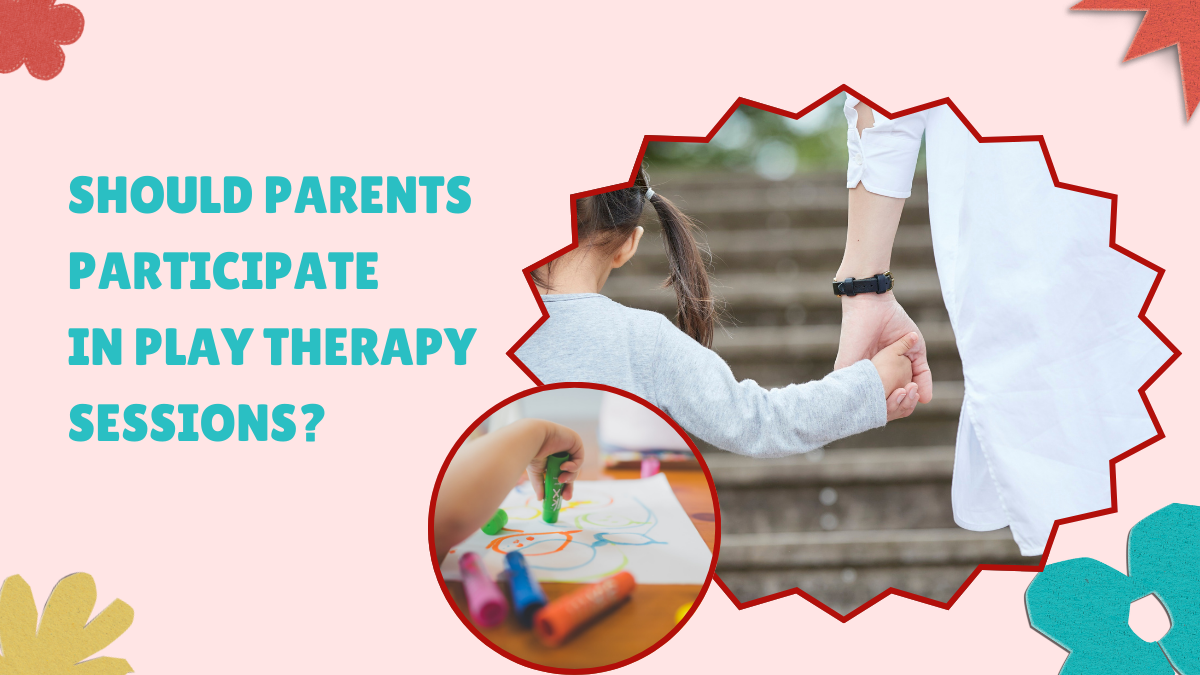Should Parents Participate in Play Therapy Sessions?

You’ve carefully prepared your playroom. You’ve mapped out today’s session. And then a child walks in and asks:
“Can my mom come in with me today?”
Cue that little internal pause.
It might sound like an innocent request, but for a play therapist, it opens up a much bigger question:
Should parents—or even siblings—be included in the play therapy session?
It’s not just about this one moment. It’s about the beliefs, clinical models, goals, and outcomes that shape the way we practice.
Let’s dive into the heart of this conversation and explore the pros, cons, and key strategies for making that call with clarity and purpose.
Start With Your “Why”
Before we talk about what to do in session, let’s zoom out. When a parent asks to join a session—or you consider inviting them in—what’s informing your decision?
Your theoretical orientation matters. Whether you follow a child-centered approach, lean into attachment theory, or take a family systems view, your model will shape how (or whether) parents are included.
So before making that call, ask yourself:
-
Who is your client?
-
What’s the role of the parent in your treatment model?
-
What kind of change are you trying to create—and how does the parent support that?
Why It Can Work: The Benefits of Including Parents
Including parents (and even siblings) in the play therapy room can be powerful when it’s done with intention. Here’s what it makes possible:
1. Stronger Attachment
When we’re helping kids build secure relationships, bringing parents into the playroom can foster safety, co-regulation, and healing right where it counts—inside the attachment relationship itself.
2. Faster, More Sustainable Change
Therapy is just one hour a week. When parents are part of the process, they’re more equipped to extend those therapeutic gains into daily life.
3. Real-Time Insight
Ever feel stuck in the “I tried that, and it didn’t work” loop? When you bring the family into the room, you get to see the dynamics firsthand. It gives you clearer insight into what’s really happening—and what kind of support or intervention is needed.
4. Better Sibling Understanding
Sometimes the conflict between siblings looks overwhelming from the outside. But inside the room, you might witness kindness and affection that tell a different story. That insight can reshape the way families relate and how you support their healing.
Why It Doesn’t Always Work: The Drawbacks to Consider
Including parents in the room isn’t always helpful—or safe. Some of the drawbacks include:
1. Children Lose a Private Space
Sometimes kids need their own healing zone—especially if they’ve experienced relational trauma or are working through deep internal processes.
2. Safety Concerns
Not all adult figures are safe. If there's a history of abuse, neglect, or trauma, the playroom must remain a secure space for the child—physically and emotionally.
3. No Framework = Chaos
Here’s a hard truth: including parents in a session isn’t just “individual therapy plus one.” Without a clear model to guide your work, things can get awkward, unproductive, or even damaging. You’re now in family therapy territory—and you need a model that matches.
Tips for Including Parents (The Right Way)
If you do choose to include parents or siblings, here’s how to do it intentionally:
1. Get Clear on the Purpose
Why are they joining this session? What are you hoping to achieve? Make sure you can answer that before you open the door.
2. Meet with Parents First
Never let the session be their first introduction. Meet ahead of time to explain the approach, their role, your role, and how it all works.
3. Think “Partner,” Not “Problem”
Most parents don’t need fixing—they need support. Help them feel like a teammate in the healing process, not the cause of the problem.
4. Teach Through the Play
Use the session to model, teach, and practice new skills. That might include co-regulation, conflict resolution, or strengthening connection.
5. Use a Framework That Guides You
Whether it’s TheraPlay, Gestalt, Adlerian, or a blended attachment-family systems model, your theoretical GPS should tell you what to do in each stage—what activities to use, what roles each person plays, and what progress looks like.
So What Now?
If you’ve ever felt unsure about inviting parents into the session—or felt it didn’t go quite the way you hoped—you’re not alone.
This work is complex. But when you’re grounded in your model and guided by intention, you can create powerful experiences for both children and their families.
If you’re looking for more support in this area:
Join the my next training on the topic of Attachment-Focused Family Play Therapy – whether you attend virtually or in-person, you’ll walk away with a full framework for integrating families into your play therapy sessions.
And if you’re craving a community to help you apply what you learn, get on the waitlist for Play Therapy Elevation Circle—a space to grow, connect, and refine your craft alongside fellow play therapists.
Categories: : Play Therapy, Play Therapy Academy, Play Therapy Collective, Play Therapy Model, Podcast, Role of parents
 Cathi Spooner
Cathi Spooner 
